A Postcard from Tuscany’s crystal town
Inside the RCR Crystal Factory: the history, the contemporary innovations, and how they managed to turn crystal into something to use everyday.
Ciao, I’m Tommaso! If you’ve recently subscribed, this is Postcards from Tuscany, a little corner of our main newsletter Letters from Tuscany.
Postcards from Tuscany is a free space where I share stories, and you’re welcome to leave your comments and experiences too. I’m the other 50% of Juls' Kitchen—Giulia’s husband, the photographer behind all the images you see here and in our latest cookbook Cucina Povera. I also handle videos, podcasts, and all things technical. If you’d like to catch up on previous postcards, you can find them here. Enjoy the read!
Before that, I want to thank you everyone who has already subscribed to Letters from Tuscany. Your support means the world to us. It’s not just about recipes or cooking classes—it’s about being part of something bigger, sharing a passion for Italian food, culture, and stories.
If you haven't already done and it’s a good time, I invite you to consider subscribing. Your contributions allow us to continue exploring Italy’s culinary traditions and sharing them with you—one recipe, one story at a time. Every subscription helps keep this creative journey alive, ensuring that we can keep bringing a piece of Italy into your home. And for that, we’re deeply grateful.
Ever since I moved from Florence, RCR has been a constant presence in our lives. My father-in-law worked there for over 40 years, and through him, we have experienced many of the company’s milestones. We’ve seen product drafts before they hit the market, gifted RCR glasses at Christmas, and even felt the weight of the company’s struggles during tougher times. There was even a period when Giulia and I took photos of their products for a project. And, of course, our house is filled with RCR glasses—we have boxes even under the bed! 😄
So, when I finally had the chance to visit the factory, it felt like a dream come true. I’ve always been curious to see how these beautiful pieces of glassware are made, but to be honest, I didn’t know what to expect. I couldn’t imagine how glasses were produced on such a large scale. When we think of how glass is worked, we all have in mind a drop of molten glass blown by mouth with a reed, and then transformed into a beautiful piece of artisanal art. Like the Murano glass for example.
Walking through the factory, I was completely blown away by the process. For a few moments, as we stood inside, I felt like I was in The Matrix—you know, the movie with Keanu Reeves. There was this repetitive hum of machines, loud noises, steam rising around us, grease-streaked pipes, and mechanical arms moving in perfect sync. It was an overwhelming and fascinating experience.
RCR’s story is deeply rooted in tradition, dating back to 1967, when a group of local artisans united to produce lead crystal. Seeing this legacy firsthand, through the same factory where Giulia’s father spent much of his career, gave me a profound sense of connection to this Tuscan company. But what surprised me most was how RCR has adapted over the years, moving from its golden age in the ‘80s and ‘90s to a time of crisis when lead crystal production faced bans.
In 2007, they reinvented themselves with Luxion®—an eco-friendly, lead-free crystal glass that’s 100% recyclable. The factory I visited was full of innovative, sustainable solutions, from solar panels to electric furnaces that run non-stop but use clean energy. It’s a fascinating blend of old-world craftsmanship and modern sustainability.
And the production process—wow. Whether it’s blown glass, pressed glass for ornate pieces, or a combination of techniques for bottles, every step of the way requires precision. Seeing a single drop of molten glass turn into an intricately designed glass was mesmerizing. It reminded me of just how much effort and artistry goes into something we often take for granted.
Today, RCR is no longer just a name tied to giftware—it has entered the world of fine dining and mixology, with their glassware being used in top restaurants and cocktail bars around the world. Their goal is clear: to make crystal not just something you keep in a display case, but something you use and enjoy every day.
We proudly use RCR’s beautiful wine glasses for aperitivo and lunch, and their liquor glasses when we finish our meals with a little limoncello. Supporting local businesses like RCR isn’t just a choice—it’s a way to honor and celebrate the rich craftsmanship of our region.
If you find yourself passing near Colle di Val d'Elsa and there is still room in your suitcase, near the RCR factory you can also find the factory store where you can buy the glasses you like best at a discounted price.




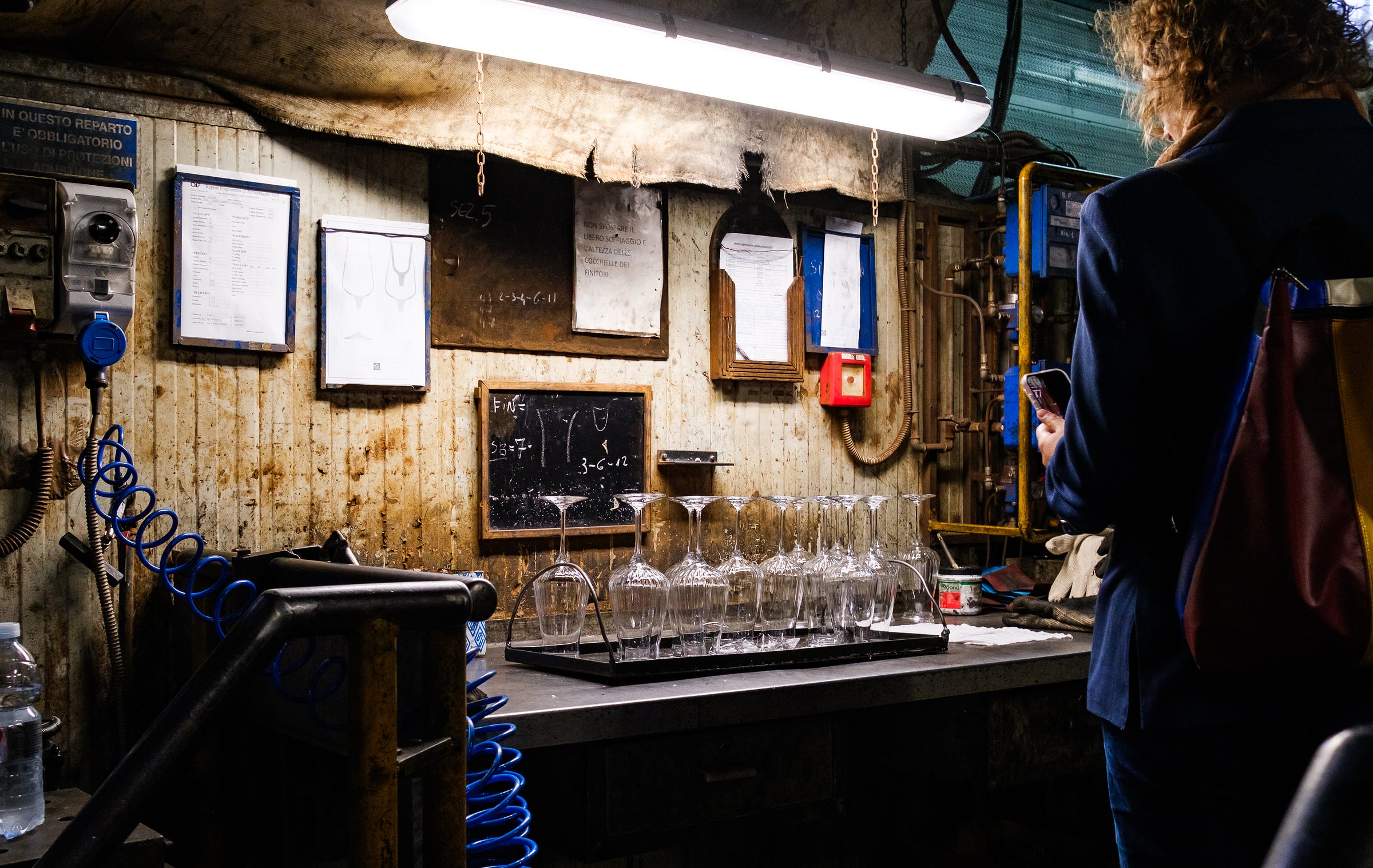
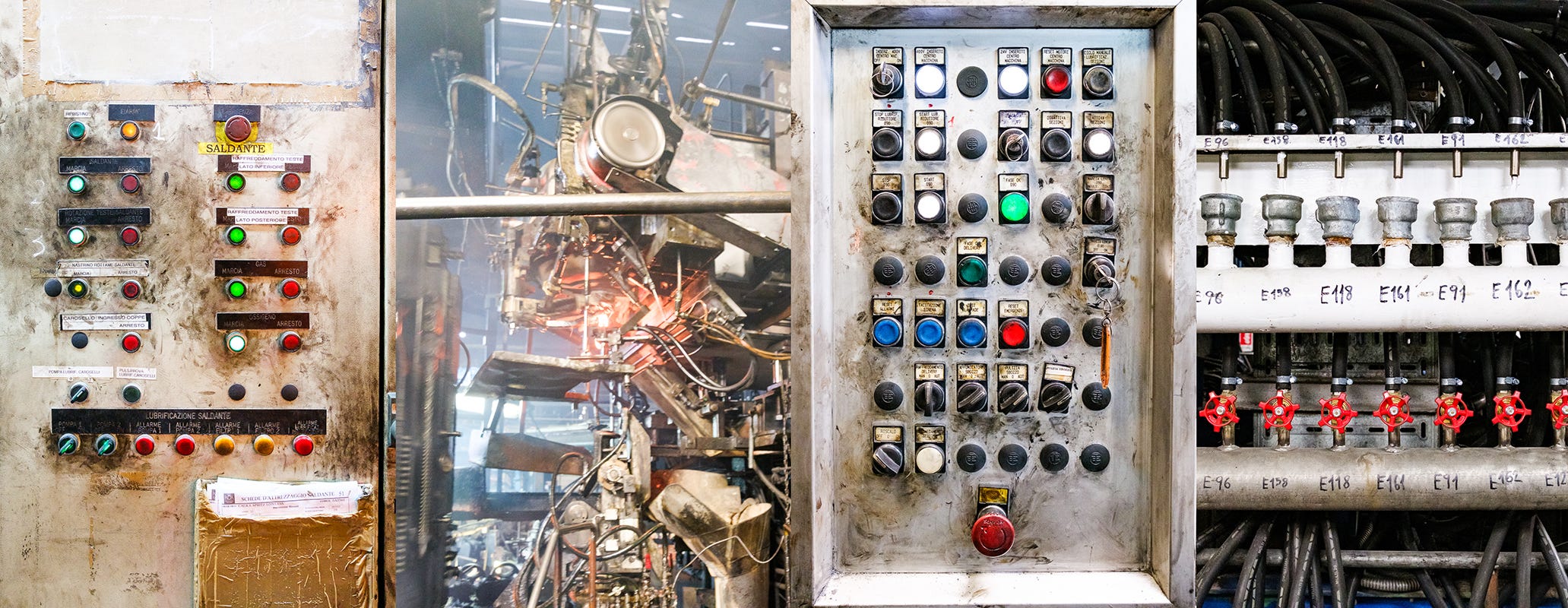
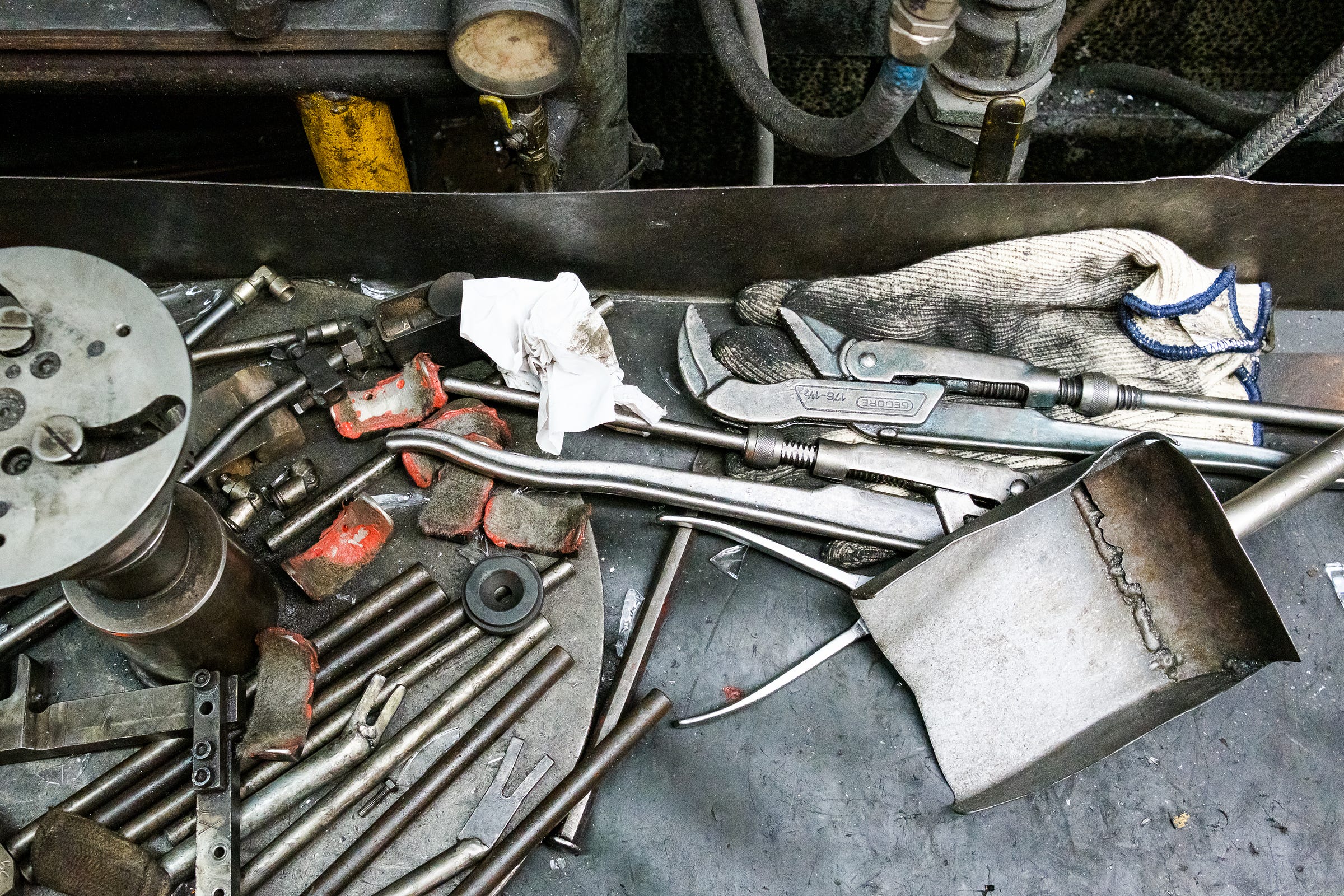
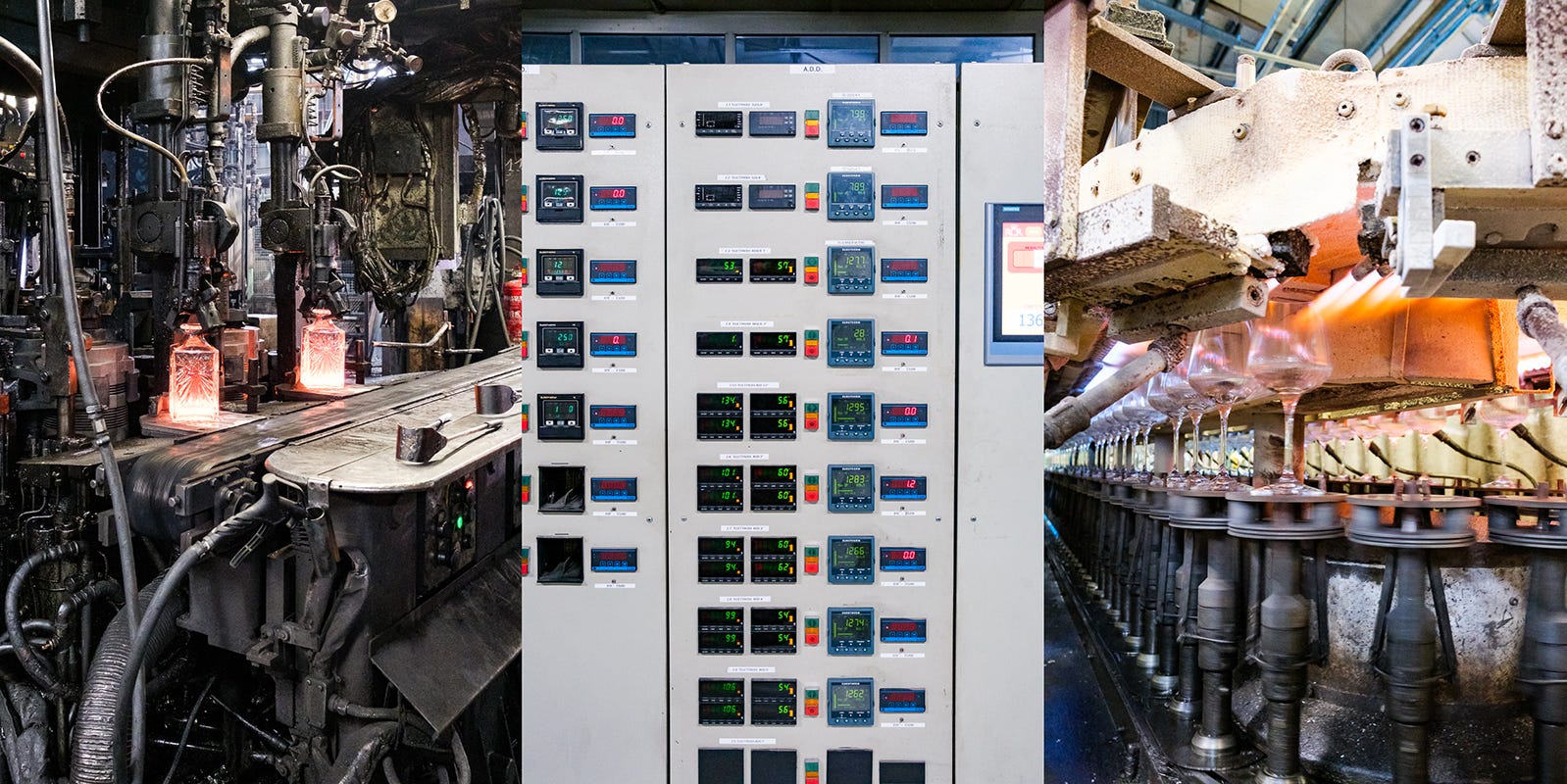
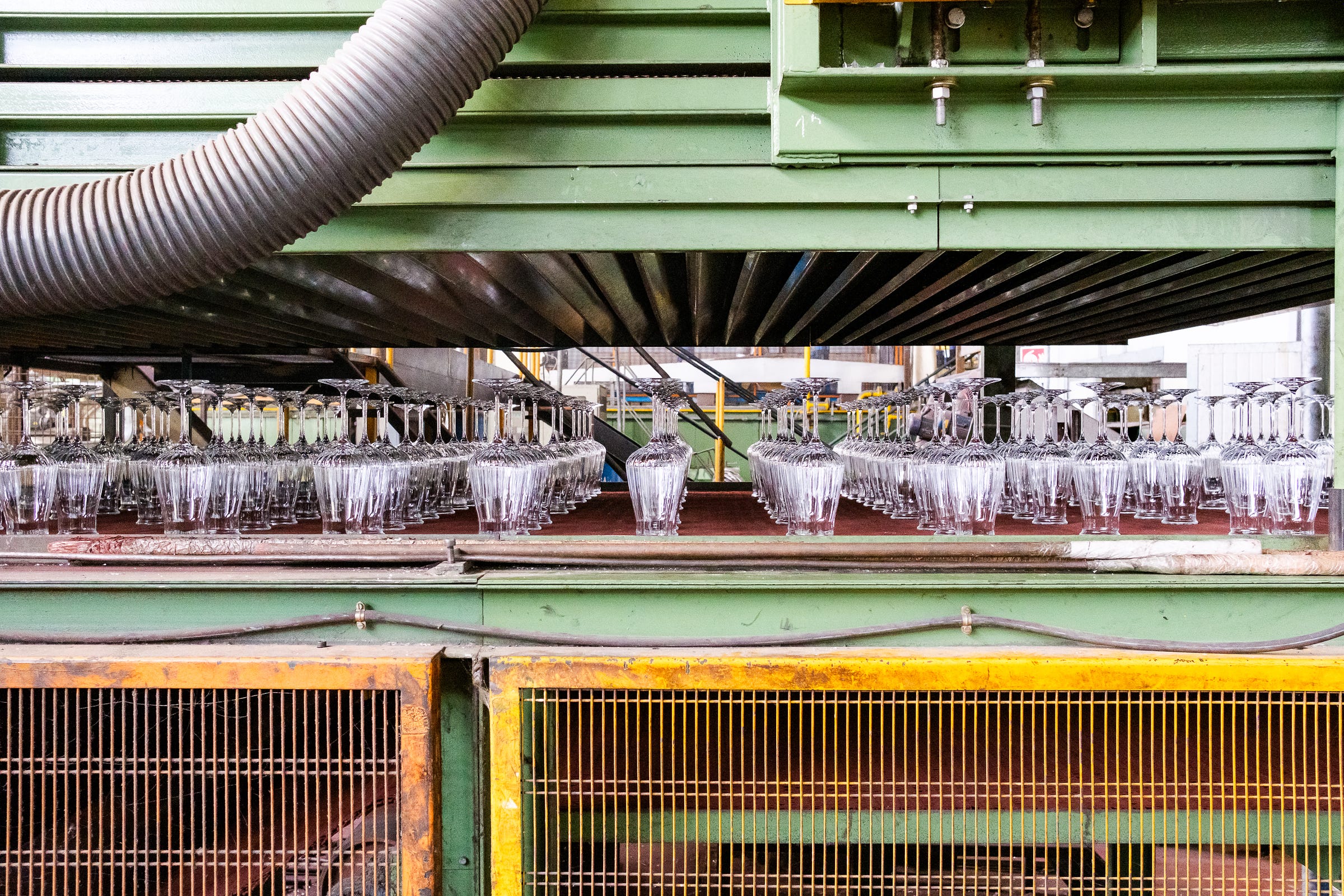
RCR has a place in my heart and my career! In the 80s I worked at an ad agency in Firenze and we had the RCR account. I personally designed many of their logos, packaging and catalogues! And of course I have visited the factory. I still use some of their glasses, which proudly proclaimed 24% pure lead crystal!!
A great story of innovation and reinvention. Because it's so often artisanal products that are celebrated in Italy, it's easy to forget that the same spirit of craftsmanship exists in so many of it's larger manufacturing businesses, from Ferrari to textile companies to companies like RCR.